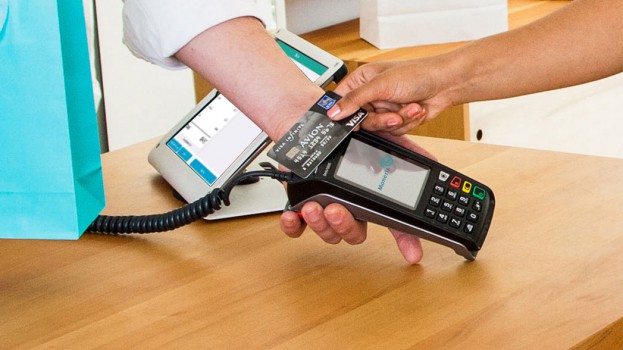The trend toward contactless payment systems continues unabated.
According to a Moneris’ quarterly MonerisMetrics report, these contactless transactions – including tap-enabled cards, mobile wallets and wearables – continue to account for the bulk of card payments in Canada. They made up 52.5% of total card payments in Q2 of this year, trending slightly upward from 51.5% in Q1.
The total volume of transactions grew by 25.4%, with the number of transactions up by 20.9%. Debit cards are also more popular than credit for contactless payments, making up 65% of transactions.
In terms of regional breakdown, PEI leads the way with 57.5% of all card present transactions being contactless, followed by Manitoba (56%), Ontario (54.8%) and British Columbia (54.6%).
Year-over-year spending with credit and debit cards grew by 2.9% in Q2.
Angela Brown, CEO of Moneris, said in a release that the trends are a signal that “tap-to-pay is here to stay.” Brown added that contactless payment systems are driving a real change in consumer behavior and that the markets are witnessing a change in the landscape toward an accelerating adoption of digital wallets.
The slowest regions in the country for contactless payment growth, for the second quarter in a row, were Saskatchewan, Alberta and Newfoundland and Labrador, where the amount of contactless payments dipped compared to the same quarter last year.
When it comes to where discretionary dollars are being spent this summer, video game supplies, nut and confectionary stores, and amusement park attractions saw a sales lift (19.5%, 16.9% and 11.8%). In the business world, software integration spending grew 21.7% over 2018, while computer network and information service professionals saw a spike of 11% from 2018.
When it comes to foreign visitors spending within Canada, the U.S. leads contactless spending volume, followed by China. The biggest year-over-year growth, however, came from the U.K. at 16.2%.
























